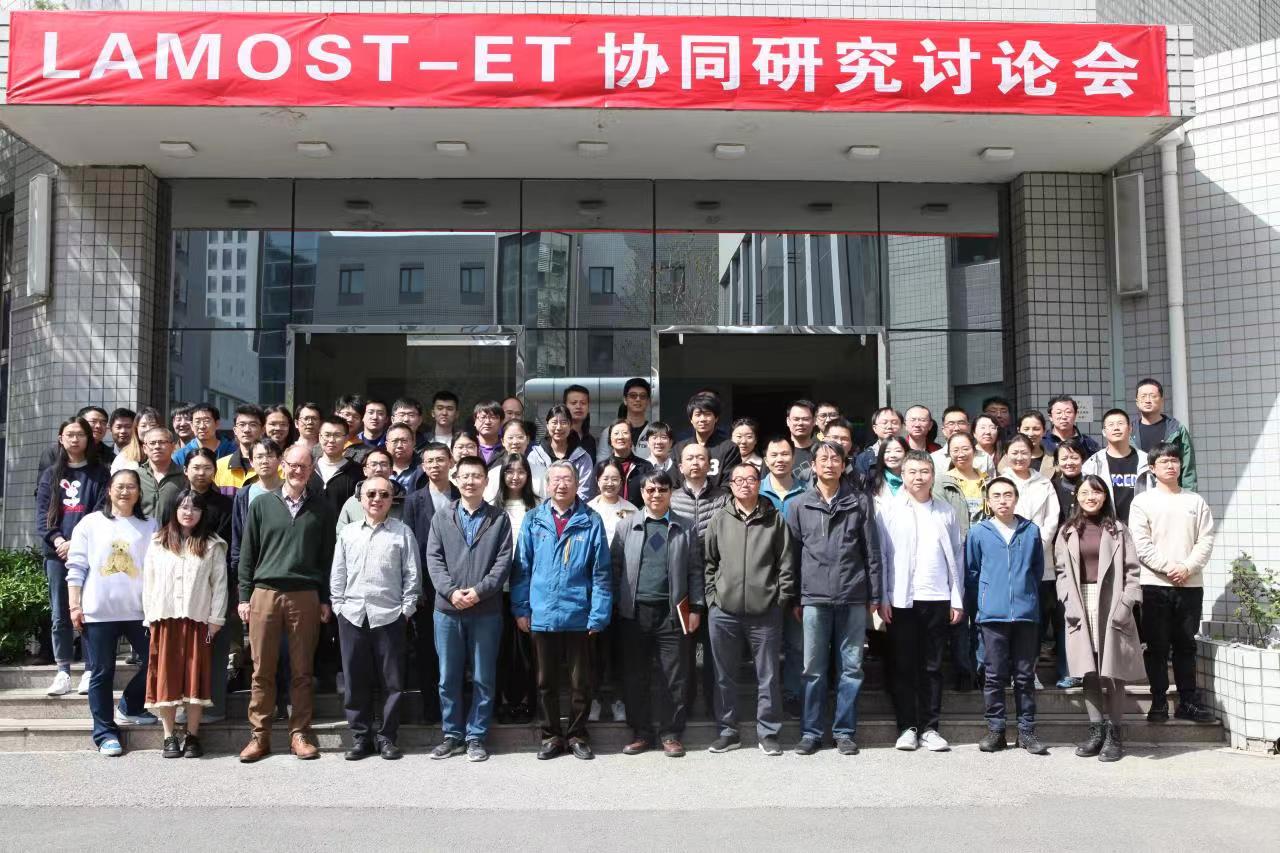You are here
LAMOST-ET Synergy Seminar Held at NAOC
On April 6 - 7, 2023, the LAMOST-ET synergy seminar was held at National Astronomical Observatories, Chinese Academy of Sciences (NAOC). The seminar aims to gathering ideas about science and feasibility of possible synergy between ET and LAMOST. 97 participants, from 21 institutes and universities of 5 countries, attended the meeting.
The seminar was started with stimulating introductions on both the Earth 2.0 (ET) project and LAMOST sky surveys. Aiming to search for the first "Earth 2.0" in our Galaxy, the ET project is a design advanced optical space telescope that integrates two exoplanet detection methods of transit and microlensing, and is currently under active preparation. LAMOST is one of the telescopes with the highest spectral acquisition rate in the world. Hundreds of thousands of spectra of stars in the Kepler/K2/TESS exoplanet survey sky areas have been obtained by LAMOST phase I and II sky surveys. These data have enabled cutting-edge research in many fields of astronomy, such as exoplanets, stellar physics, compact objects, and the evolution of our Galaxy.
Presentations on different scientific topics, including exoplanets, stellar activity, astroseismology, Galactic evolution, as well as binary systems and variable stars, were then performed. Further discussions on synergy between LAMOST and ET, including scientific goals, feasibility, strategy, and plan, were carried out. This seminar strengthened the communication and collaboration of astronomers in various fields, and laid the foundation for further collaborative research based on LAMOST and ET.

Figure. Group photo of on site participants.
